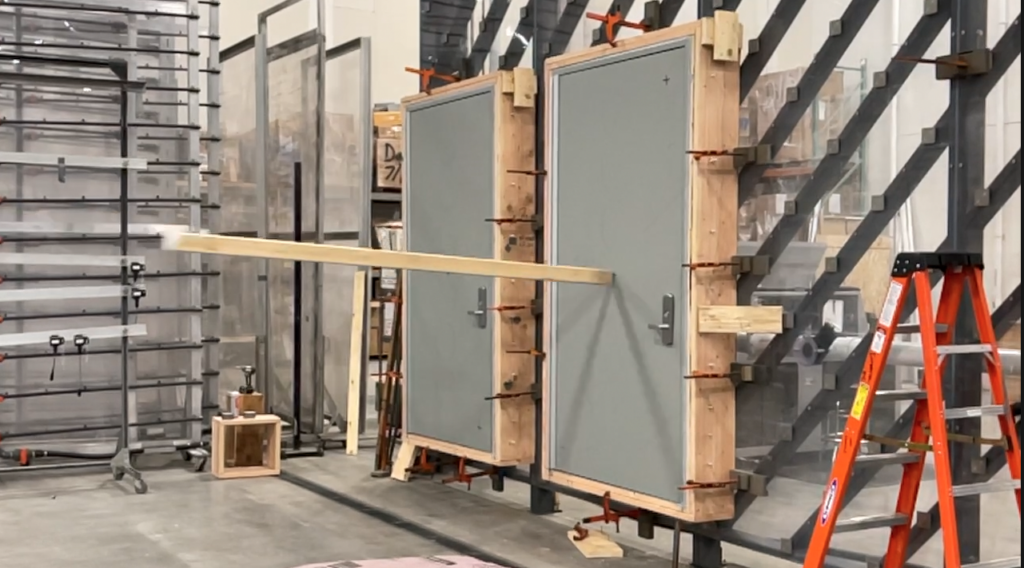 There is a lot to consider when you’re planning flood protection for your building / facility. When choosing the best flood barrier, for example, one must consider more than just the size and structure of the opening, the means of deployment (active vs passive) and the water pressure. It’s also critical not to forget that the current within floodwaters often carries debris with it.
There is a lot to consider when you’re planning flood protection for your building / facility. When choosing the best flood barrier, for example, one must consider more than just the size and structure of the opening, the means of deployment (active vs passive) and the water pressure. It’s also critical not to forget that the current within floodwaters often carries debris with it.
The Facts:
According to a study published in the Journal of Fluids and Structures in 2019, “Field surveys of recent major flood events have emphasized the need for an in-depth examination of debris loading. Debris loading occurs when solid objects entrained within the flow interact with a structure in its movement path, exerting loads through direct impacts or damming.”
In other words, objects driven by floodwater currents can slam into your flood barriers, causing damage. Trees, logs and branches are some of the most common debris to be carried by floodwaters, but virtually any object that can float can become a hazard – especially materials with significant mass.
The risks of debris impact vary depending on the location of the structure, and consequently, not every flood proofing solution needs to provide the same degree of protection against them. However, the possibility of debris impact must be a consideration when developing any flood protection solution.
The Challenge:
If debris impacts on your flood barrier result in a breach, the consequences are often catastrophic. A hole or crack in a barrier that is working hard to prevent flooding is very difficult to repair until the waters have subsided, and that, of course, is most likely too late. Instead, the flood protection you use – whether it is rigid or flexible – must be able to simultaneously stand up to the persistent pressure of the volume of floodwater possible in its location, along with the acute impacts of the types of debris that is present in the area.
The Solution:
Successful flood prevention starts by partnering with an experienced manufacturer that offers a wide variety of barriers that are engineered, developed and tested to be the best fit for your application.
PS Flood Barriers™ engineers its products to Building Code standards. All site-specific loads, as specified by the local project engineer, are analyzed to establish the flood barrier structural design required to resist flood loads, including debris impact loads.
PS Flood Barriers also conducts physical tests, for example, testing its Hydro1® Pedestrian Flood Doors by slamming large posts into them during their development. In part, these stringent assessments are why these doors have passed Florida Product Approval testing, including approval for the High Velocity Hurricane Zone (Miami-Dade and Broward counties).
Learn more about Hydro1 Flood Doors here.
Another example includes Flex-Gate® flexible barriers, which have been tested by withstanding the impact of huge logs while maintaining their floodproofing integrity. The flexible material repels the logs by flexing to absorb impact loads rather than breaking, and products such as the Flex-Gate Side Deploy are so dependable that they are FM Approved.
Learn more about Flex-Gate products here.
The challenges facing your flood barriers can go well beyond water. How confident are you that your flood protection will not succumb to debris impact? By working with PS Flood Barriers, you can feel confident that your facility is protected with flood solutions that give you and your company the best chance to successfully repel the advancement of floodwater.
To learn more, contact PS Flood Barriers at 877-446-1519.
Source: https://www.sciencedirect.com/science/article/abs/pii/S0889974618304638